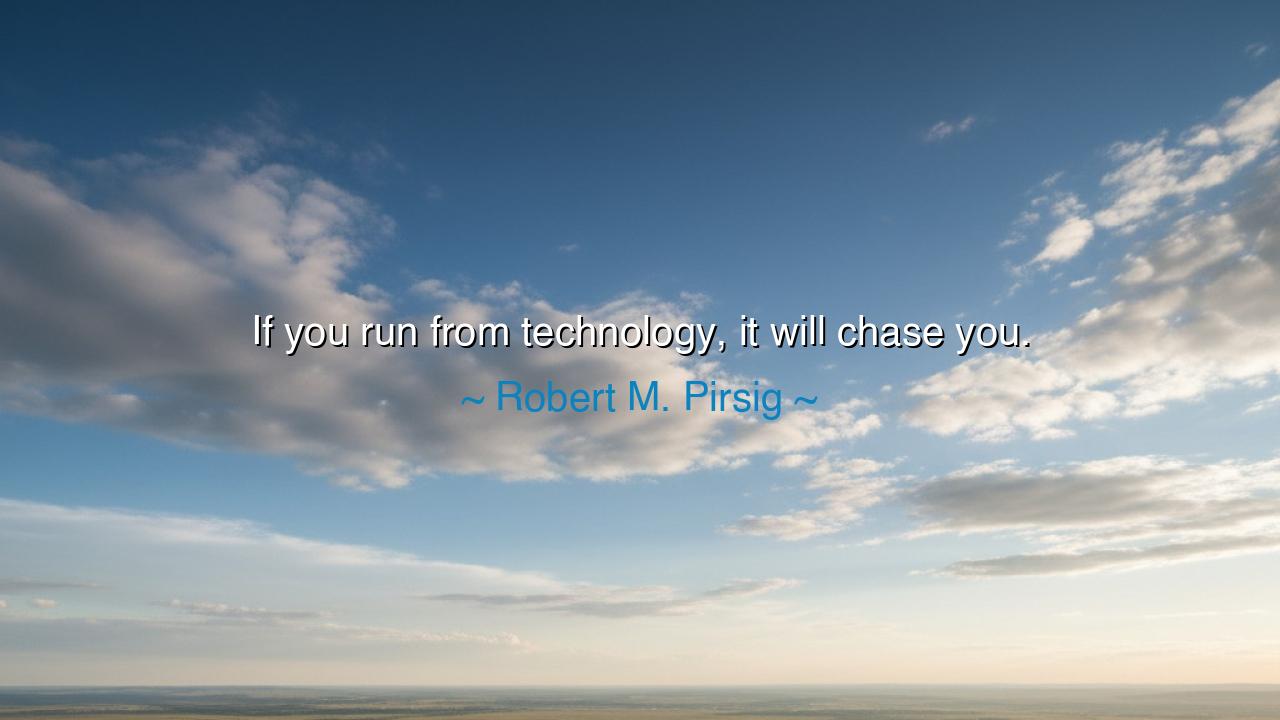
If you run from technology, it will chase you.






Hear now the wisdom of Robert M. Pirsig, author of Zen and the Art of Motorcycle Maintenance, a seeker who walked the path between philosophy and machinery, between spirit and steel. He declared: “If you run from technology, it will chase you.” These words carry not the threat of machines rising in rebellion, but the truth that in the age of invention, no man can flee from the tools that shape his world. To deny them, to pretend they do not exist, is to invite their shadow to grow until it overtakes you.
The meaning is clear. Technology is woven into the very fabric of human life. It is not only in vast machines and glowing screens, but in every bridge, every lamp, every wheel, every plow that tills the soil. To turn your back on it is to turn your back on civilization itself. Like a river, it cannot be ignored—it flows around you, and if you refuse to learn its currents, you risk being swept away. Technology will not be denied; it will pursue you until you acknowledge its presence.
Pirsig’s insight springs from his own struggle. He saw in motorcycles not just engines of motion, but symbols of mankind’s uneasy bond with machines. Many cursed them as lifeless, cold, alien to the soul. Yet to Pirsig, the way to harmony was not rejection but understanding—learning their parts, respecting their design, and merging one’s spirit with their rhythm. Thus he proclaimed that running from technology only deepens the divide; facing it, understanding it, transforms the machine from master into companion.
History confirms this truth. In the early days of the Industrial Revolution, many workers, fearing loss of livelihood, rose in anger and destroyed the machines of the textile mills. They believed that by smashing the looms they could halt the tide of change. Yet the march of technology did not stop; it returned stronger, more widespread, more relentless. Those who resisted without understanding were left behind, while those who adapted found new paths to survival and growth. The machines had “chased” them, just as Pirsig foretold.
This lesson is no less urgent in our own time. Some recoil from computers, from artificial intelligence, from the rapid tide of digital life. They long for escape, for a world untouched by circuits and code. Yet even if they cast aside their devices, the world continues to be shaped by them—governments, economies, even the voices of loved ones flow through these unseen channels. To deny them is to blind oneself while the landscape shifts beneath your feet. Indeed, if you run from technology, it will chase you, until you are forced to confront it.
But let this not be a call to despair. The wisdom here is not that you must surrender to technology, but that you must learn to live with it rightly. Approach it not with fear, but with balance. Seek to understand its workings, its gifts, and its dangers. Treat it as a tool, not as a tyrant, and never forget that it is the heart of man, not the machine, that must remain sovereign. In this way, you will no longer be chased, but will walk side by side with the inventions of your age.
Therefore, take this into your life: do not flee from the tools of tomorrow. Learn them, shape them, guide them. Remember always that you are the master, they the servant. Use them to connect, to build, to heal, not to harm. For if you run, they will chase you. But if you stand firm, wise and patient, they will serve you, and together you will walk toward a future of both progress and humanity.
Thus is Pirsig’s teaching: face technology with courage, lest it become your pursuer. Embrace it with wisdom, and it will become your ally. For to flee is to be hunted, but to endure is to be free.






AAdministratorAdministrator
Welcome, honored guests. Please leave a comment, we will respond soon